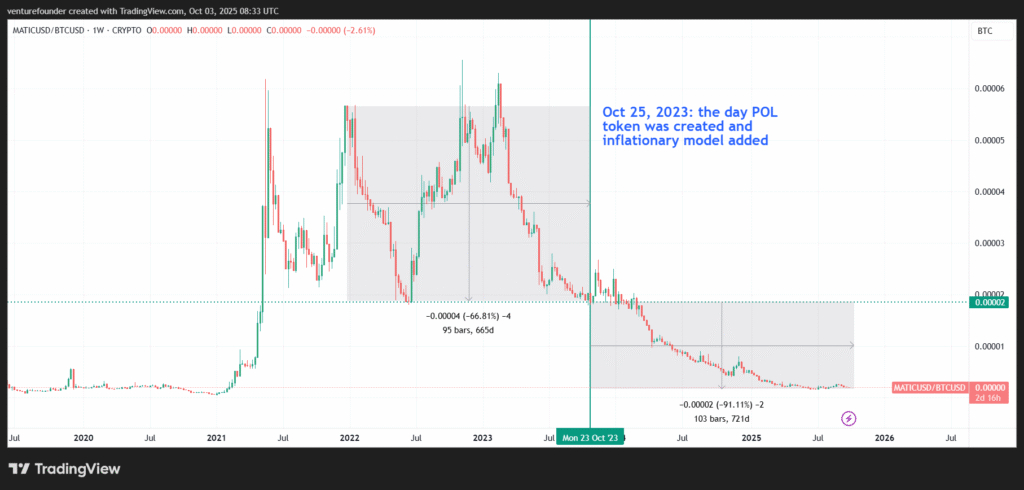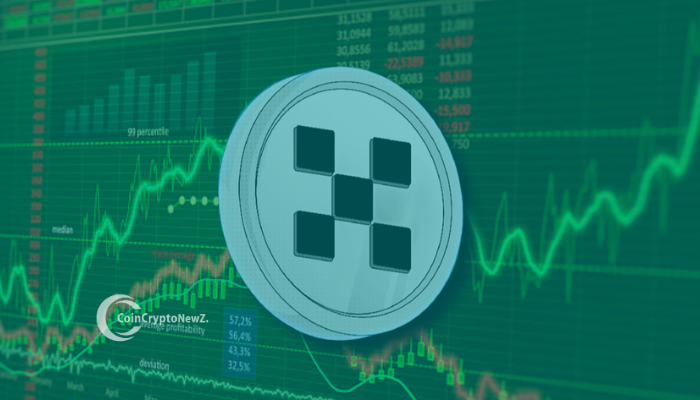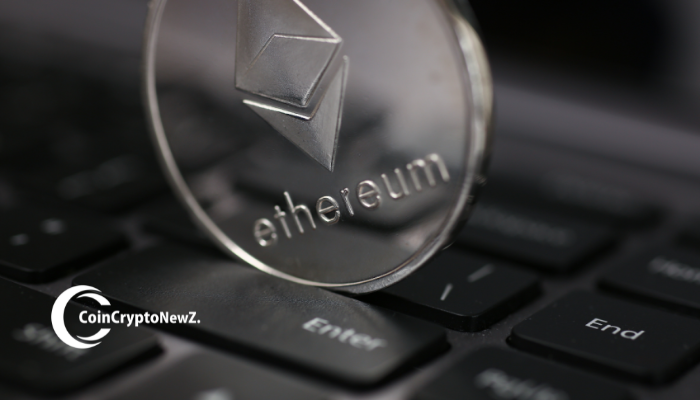- $MATIC saw a 91% drop after the introduction of the $POL inflationary model.
- Polygon stablecoin volumes surged to an all-time high of $5.06B in September 2025.
- Critics argue Polygon’s inflationary model has hindered $MATIC’s growth potential.
Polygon’s network saw a considerable shift on October 25, 2023, with the introduction of the inflationary model for the newly created $POL token. This change has drawn significant attention due to the sharp decline in $MATIC’s value against Bitcoin (BTC) following the launch.
Meanwhile, data shows $MATIC experienced a 68% drop during the largest crypto bear market, but the addition of the inflationary model resulted in an additional 91% decrease. Critics argue this move undermined Polygon’s tokenomics and harmed $MATIC’s value.

Many in the crypto community, including key influencers, believe that the 2% annual inflation rate introduced with the $POL token is a pivotal factor in the downturn. This change has led some to question whether Polygon can recover and regain lost value in the face of such significant depreciation.
Surge in Stablecoin Volumes Provides Contrasting Narrative
Despite the decline in $MATIC’s value, Polygon has reached a significant achievement. The network’s stablecoin volumes hit an all-time high of $5.06 billion in September 2025.
According to transaction data, there has been an upward trend in stablecoin transfers, particularly from mid-2024. The breakdown of these transactions reveals a substantial rise in “Bot” and “Protocol” related transfers, indicating the growing use of Polygon in decentralized finance.
This increase in stablecoin volume highlights Polygon’s expanding role in daily peer-to-peer payments and its position as a leading blockchain for decentralized finance applications. While $MATIC continues to struggle, the growth in stablecoin usage provides a strong indication of Polygon’s increasing adoption.
What’s Next for Polygon’s Tokenomics and Market Position?
The changes to $POL tokenomics have sparked debate regarding the future of Polygon. Some experts have suggested revising the tokenomics to help $MATIC recover and regain lost ground.
Despite the struggles, there is still hope that Polygon can reach a price range of $1 to $2 by the end of the current cycle. However, higher price targets like $3 or $5 now appear to be beyond reach.
As Polygon works to recover from these challenges, the continued growth in stablecoin transactions could serve as a buffer. Stablecoin adoption remains a key aspect of Polygon’s long-term potential, even as the network navigates through the current downturn.
Disclaimer: This article is for informational purposes only and does not constitute financial advice. CoinCryptoNewz is not responsible for any losses incurred. Readers should do their own research before making financial decisions.







